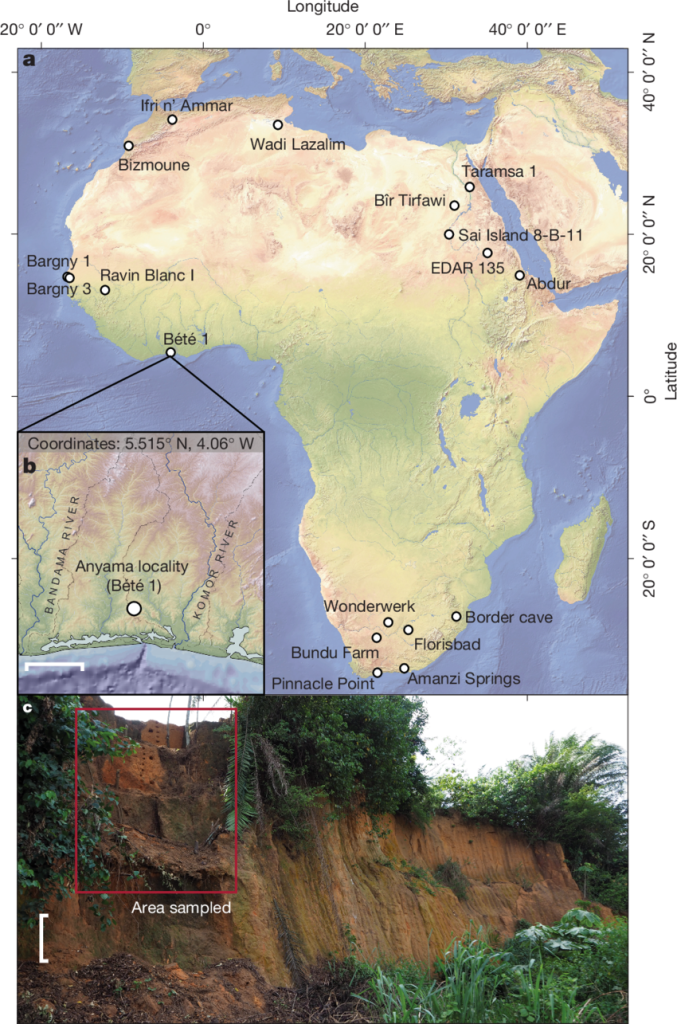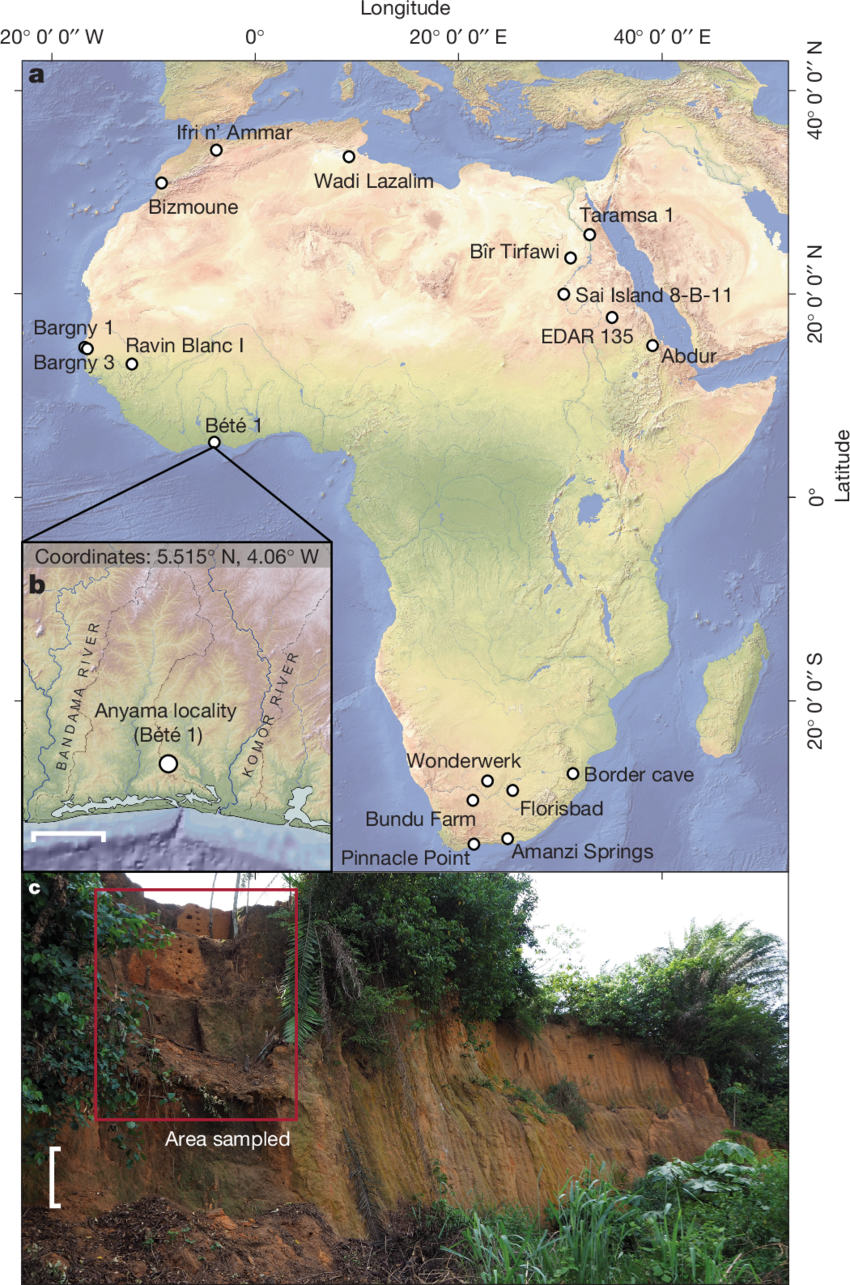A remarkable archaeological find in West Africa has unveiled evidence that early humans inhabited tropical rainforests as far back as 150,000 years ago, challenging long-held assumptions about the environments our ancestors occupied. The discovery, centered at the Bété I site in southern Côte d’Ivoire, marks the earliest known association between humans and wet tropical forests, pushing back the timeline of rainforest habitation in Africa by over 130,000 years.

(around 130–190 ka). b, Locat ion of Bété I site . c, Sequence at B été I in 2020
after sampling for geochronology and palaeoecologic al proxies. Ben Arous, E., et al.
The Bété I site, first explored in the 1980s by a joint Ivorian-Soviet team, yielded stone tools such as picks and retouched flakes buried in layers of sediment. Initially, limitations in dating technology and the loss of artifacts during the Second Ivorian Civil War in 2011 hindered progress. However, a recent reinvestigation, led by archaeologist Eslem Ben Arous of Spain’s National Centre for Human Evolution Research, employed advanced techniques to revisit the site. With the guidance of Professor Yodé Guédé from Université Félix Houphouët-Boigny, the team relocated the original trench and applied modern methods unavailable during the initial excavations.
Using optically stimulated luminescence and electron spin resonance dating, researchers determined that human occupation at Bété I began around 150,000 years ago, coinciding with the presence of Homo sapiens in Africa. These findings link the stone tool assemblages directly to early modern humans, offering a glimpse into their adaptability to diverse ecosystems.
Analyses of sediment samples from Bété I, including pollen, plant wax biomarkers, stable isotopes, and phytoliths (silicified plant remains), revealed that the region was a humid, heavily wooded rainforest at the time of human occupation. This environment, far from the savannas traditionally associated with early human evolution, suggests that Africa’s tropical forests were not the ecological barriers once thought. Instead, they may have served as viable habitats or even refuges during periods of climatic stress, as supported by climate models indicating rainforest stability in the region.

“This doubles the antiquity of human occupation in rainforests previously known from Africa” said Ben Arous. “Before our study, the oldest secure evidence for habitation in African rainforests was around 18,000 years ago and the oldest evidence of rainforest habitation anywhere came from southeast Asia at about 70,000 years ago”.
The findings at Bété I reshape our understanding of human evolution by highlighting the ecological versatility of Homo sapiens. Professor Eleanor Scerri of the Max Planck Institute of Geoanthropology emphasised, “Ecological diversity is a hallmark of our species.” The presence of humans in rainforests 150,000 years ago suggests that West Africa may have been a significant hub for early human development, alongside more studied regions like grasslands and coastal areas.
Tragically, the Bété I site was destroyed by mining activities during the COVID-19 pandemic, despite its protected status. This loss underscores the vulnerability of archaeological sites to modern pressures and the urgent need for preservation efforts. Fortunately, the recent study preserved critical data, offering a vital window into our past.
The discovery at Bété I not only rewrites a chapter of human history but also prompts further exploration into how early humans interacted with diverse African landscapes. As research continues, sites like Bété I remind us of the resilience and adaptability that define our species.






